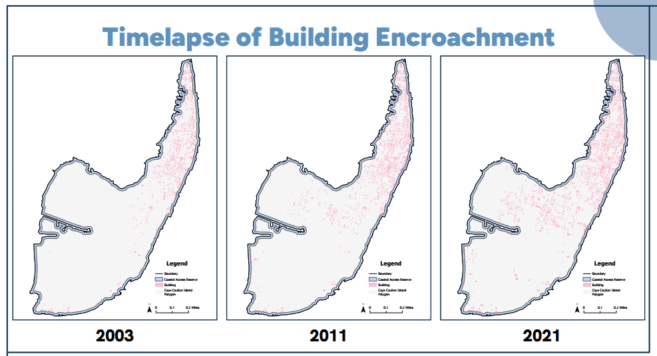Caye Caulker Village, once a sleepy fishing village, has undergone a significant transformation due to the rise of tourism. A recent study by Lucas Julian Martinez from Ohio State University, U.S.
A., investigated the impacts of seafront privatization on coastal access in Caye Caulker. The study highlights the transformation’s economic benefits and challenges to the local community.

Released on April 10, 2025, the report employed a mixed-methods approach that combined spatial analysis of satellite imagery with on-the-ground surveys and interviews with local stakeholders. This comprehensive approach provided a deeper understanding of the issue. In the introduction, Matinez states, “.
.. this rapid tourism-driven development has also led to the privatization of coastal areas, restricting local access to the coastline, which has long been an essential element of the community’s cultural and economic fabric.
Coastal areas, once shared public spaces, are increasingly converted into private areas dominated by restaurants, tourist shops, resorts, vacation rentals, and upscale developments. This shift threatens physical access to the coast and the deep-rooted social and economic ties that residents have maintained with the sea for generations.” The research indicates that full parcel development on South Caye Caulker could potentially cover 33.
28% of the coastal access reserve. Currently, building encroachment occupies 5.31% of this reserve.
At the current rate of development, it is projected that building encroachment could exceed 140,000 square feet, or 8.27% of the coastal reserve, by 2030. The study also identified several barriers to coastal access , including physical barriers such as gated entrances to docks as well as symbolic barriers, encroaching structures, and the commercial use of public spaces.
Nearly half of all docks are classified as having Fair Accessibility (27%) or Very Low Accessibility (22%). Key factors affecting access include physical barriers, surrounding land use, safety and maintenance conditions, signage, and the usage and features of the docks. “16.
38% of docks have gated entrances, 63.16% of which are locked during daylight hours. 57.
76% of docks face restricted access due to physical barriers, and 25.86% have prohibitive signage,” stated the report. Interviews conducted for the study revealed a growing sense of disillusionment among residents, largely due to the increasing influence of foreign developers and investors.
This trend has resulted in restricted access to essential coastal areas, disrupted daily routines, and threatened local livelihoods. The report noted, “Participants indicated that these changes disrupt daily routines and threaten livelihoods, particularly those dependent on coastal access. Additionally, some interviewees noted that this shift has led to rising tensions between locals, tourists, and foreign investors.
Several participants mentioned that the lack of effective coastal governance and law enforcement has exacerbated the power imbalance, leaving residents feeling marginalized and unable to protect their coastal access.” The report emphasizes the importance of a balanced approach to development. It aims to improve transparency in land management, strengthen regulatory enforcement, enhance collaboration between agencies, and ensure that development maintains public access to coastal areas while protecting environmental resources.
This approach prioritizes the long-term sustainability of the island’s resources and social cohesion. It seeks to preserve Caye Caulker’s ecological integrity and cultural heritage for future generations. It aims to maintain the island’s unique appeal as a desirable tourist destination while promoting equitable growth and development.
.
Environment

Study conducted on Tourism and Coastal Transformation in Caye Caulker

Caye Caulker Village, once a sleepy fishing village, has undergone a significant transformation due to the rise of tourism. A recent study by Lucas Julian Martinez from Ohio State University, U.S.A., investigated the impacts of seafront privatization on coastal access in Caye Caulker. The study highlights the transformation's economic benefits and challenges to the local community.












